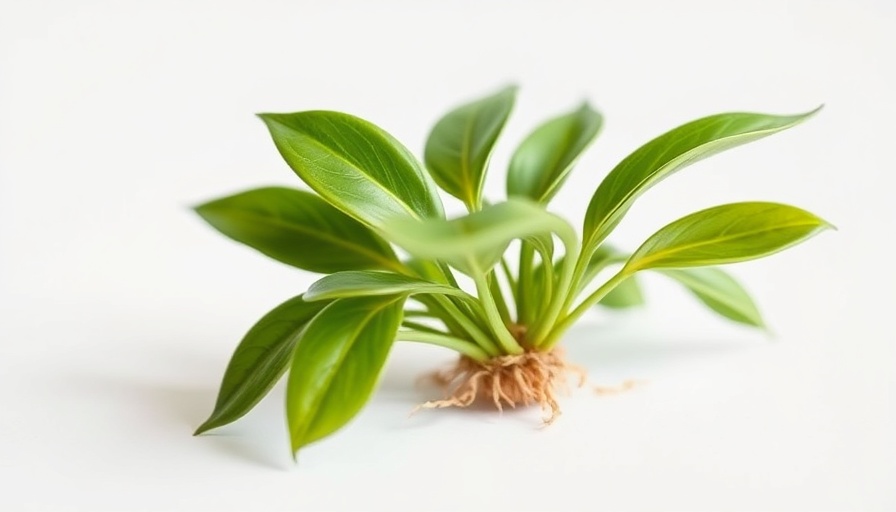
Unlocking the Joy of Houseplant Propagation
Bringing greenery into your space can be an incredibly joyful and fulfilling experience. For many plant enthusiasts, propagating houseplants not only brings more life into their homes but offers an exciting challenge as they witness new plants grow from their beloved "mother" plants. Here, we dive into easy methods of propagating houseplants that can fill your indoor garden with lush, vibrant foliage.
Water Propagation: A Simple Start
Water propagation is often the go-to method, especially for beginners. Why? It's straightforward and satisfying—watching roots develop in a clear vase can feel like magic. First, select a healthy stem from your plant and find a node, the little bump where leaves meet the stem. Cut just below this node and place the cutting in a container of water. The key is to keep the water clean and change it regularly to avoid rot. Within a few weeks, roots will appear, ready for you to transplant into soil!
Stem Cutting: A Hands-On Approach
Another popular propagation method is stem cutting. This involves snipping a healthy portion of the stem and allowing it to root in soil. Start by cutting a stem about four to six inches long and remove any lower leaves. Dip the cut end in rooting hormone to encourage growth, then plant it in moist potting soil. Over time, you’ll witness new leaves sprouting, signaling successful rooting!
Leaf Cutting Propagation: For the Patient Gardener
This method requires a bit more patience but can lead to impressive results. Leaf cuttings allow you to multiply certain plants, such as African violets and succulents. Simply cut a healthy leaf and, if applicable, retaining the petiole (leaf stem). Insert it into moist potting soil, ensuring the edge of the leaf is in contact with the soil. Cover the pot with plastic to maintain humidity, and soon enough, you’ll have new plantlets forming!
Dividing Plants: Turn One into Many
For those with broader plants, division is an effective technique. This involves removing the entire plant from its pot and separating it into two or more sections, ensuring each section has roots. Plants like spider plants and peace lilies are excellent candidates for this method. After division, pot each new plant into fresh soil and keep them well-watered as they acclimate to their new homes.
The Right Season for Propagation
Timing can significantly influence the success rate of your propagation efforts. Spring is an ideal time to propagate as most houseplants are waking up from their winter dormancy, ready to burst into growth. The increased light and warmth help newly propagated segments establish themselves more easily.
Common Challenges in Plant Propagation
While propagation is rewarding, it can sometimes come with challenges. Factors such as humidity, temperature, and the health of the parent plant can impact your success rate. Not every cutting will take, and that's perfectly okay! Embrace the learning journey—each attempt teaches you something new about plant care.
Gifting Plant Babies: A Personal Touch
One of the wonderful aspects of propagating is the ability to gift these new plants. Think about how special it would be to hand a friend a plant baby that you nurtured from a cutting. It's not just a thoughtful gift; it represents growth, care, and friendship, all wrapped in a lush green package.
Encouragement for Novice and Experienced Gardeners
No matter where you are on your gardening journey, propagating houseplants can be an enriching experience. Take your time to explore different methods and discover what works for your favorite plants. Remember, each new leaf and root is a victory worth celebrating in your home gardening adventure!
Join the Plant Enthusiast Community!
As you delve into the fascinating world of plant propagation, consider sharing your experiences. Whether it’s triumphs or trials, each story adds to the vibrant tapestry of our plant community! Reach out to fellow gardeners through blogs, social media, or local horticultural clubs—let's cultivate a connection!
 Add Row
Add Row  Add
Add 




Write A Comment